If a single picture speaks a thousand words, then how many words do two pictures side-by-side speak? Answering that question is partly what this post is all about. By comparing two pictures, we can gain a better understanding of the size, shape, and nature of the world around us.
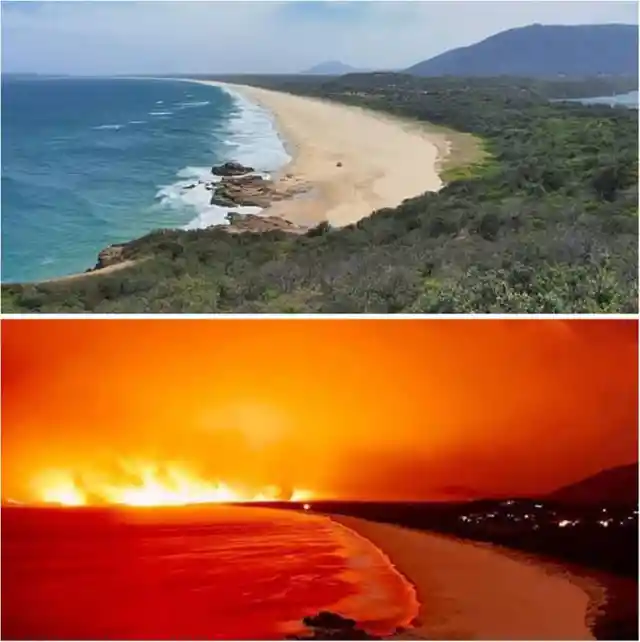
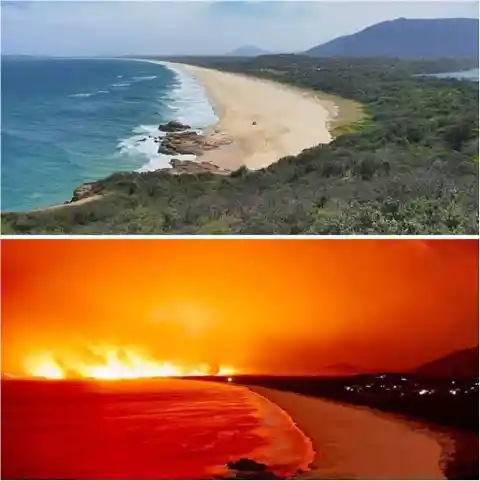
For example, if you want to get a visual of how big a blue whale is, then place that blue whale next to a human. Or, if you want to understand how a tree changes, then take a picture of it at different times of the year. The 39 comparisons below take that comparative approach to help us better appreciate ourselves and the world.
The True Size of a Blue Whale
We can understand how enormous a blue whale is by reminding ourselves that their tongues weigh as much as elephants. However, another way to grok their size is to look at a picture of a blue whale next to a human.
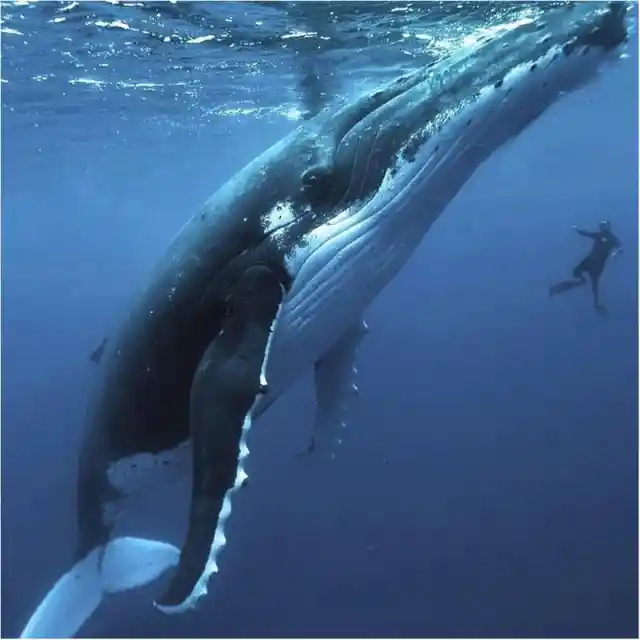
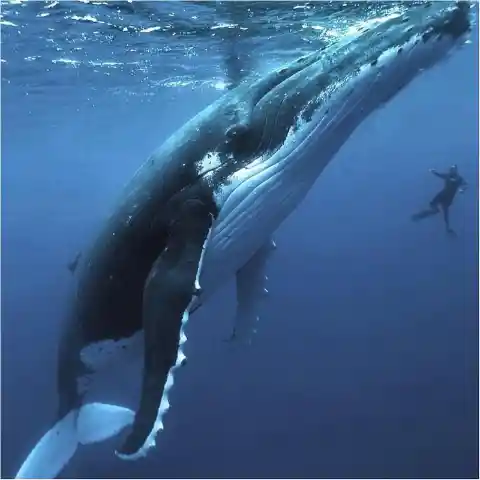
Luckily, that’s exactly what this fearless swimmer allows us to do. Since we know the average size of a human, placing one next to a blue whale really brings home what 100 feet long and 400,000 pounds means.
Like Grandma, Like Granddaughter
This next picture helps us see how looks get passed down from generation to generation. On the left side is a 61-year-old grandmother, and on the right side is her 12-year-old granddaughter. The fact that they can be so seamlessly blended is remarkable.


It also makes a lot of sense – “you’ve got your grandma’s eyes” we often say. Some of the more unique traits that get passed on include freckles and widow’s peaks, both examples of what geneticists call dominant alleles.
As Small as a Raspberry
If you’ve ever hung up a hummingbird feeder on your porch and watched through the window, then you’re well aware of just how tiny these precious creatures can be. At an average length of 3 to 5 inches, they are some of the smallest birds around.
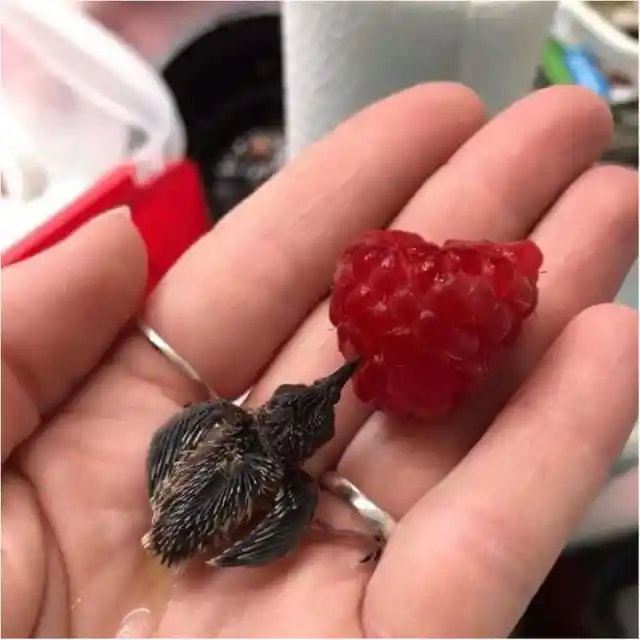
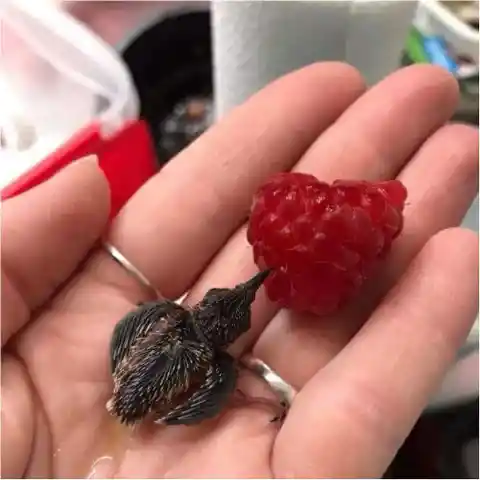
That size mixed with its lightning-speed wings and fast metabolism requires hummingbirds to spend most of their day eating. Alongside the nectar of 1,000 to 2,000 flowers, they also eat ants, insects, and beetles daily.
The Great Dane Grows
Puppies grow, inanimate objects don’t. Although it might sound obvious, it doesn’t register in our brains until we see it side by side. Luckily, the gorgeous photo below allows us to see how Elliot the Great Dane and his stuffed dragon buddy have changed over the years.
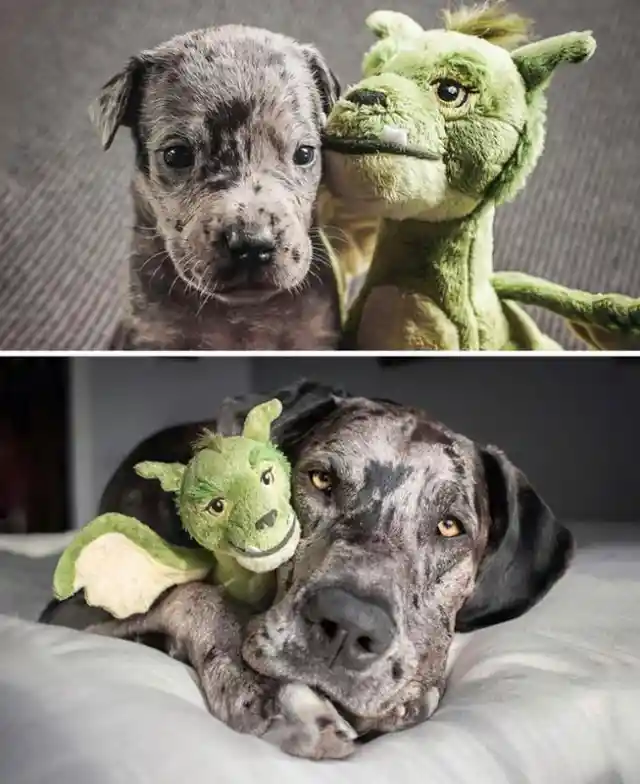
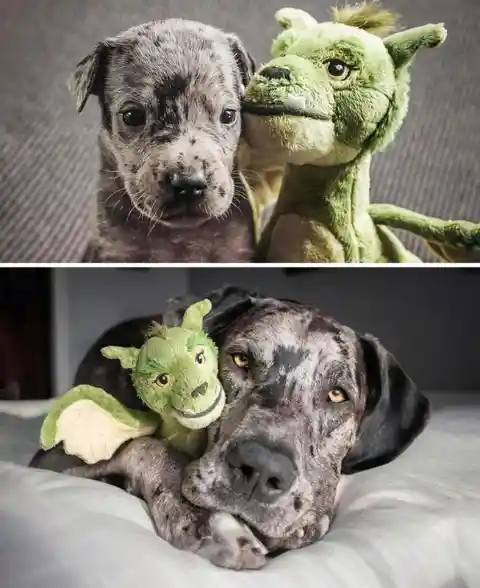
In the first photo, Elliot was a four-week-old puppy. In the second photo, Elliot was a two-year-old dog. While the dragon stayed the size and age, Elliot grew to over 2.6 feet tall.
A Cherry Tree Changes with the Seasons
One day the photographer Jozef Morgoš decided to walk out to a hill in Slovakia and snap a photo of a cherry tree. A few months later, he returned to take another picture, and then again two more times. Over the year, he snapped four photos of the same tree from the same angle.
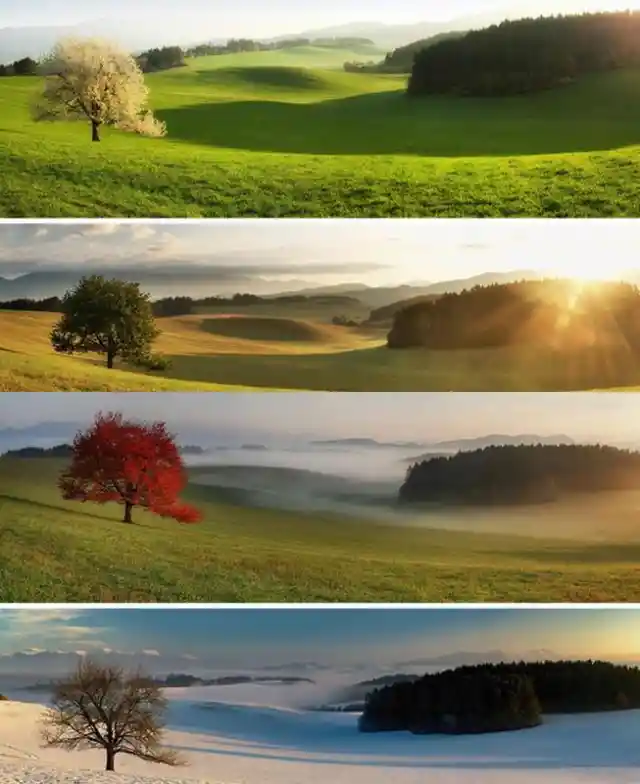
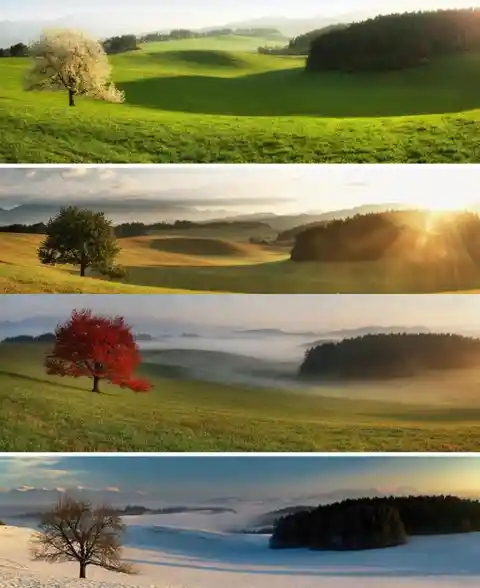
The result is the photograph above – a visual monument to the annual changes the cherry tree and landscape go through in this rural part of Slovakia.
Humans Versus Giant Sequoias
When compared to the size of a human body and the length of a human life, Sequoia trees seem to be from another world entirely. For example, the giant Sequoia – aptly called “big tree” by the environmentalist John Muir – has an average height of 164 to 279 feet.
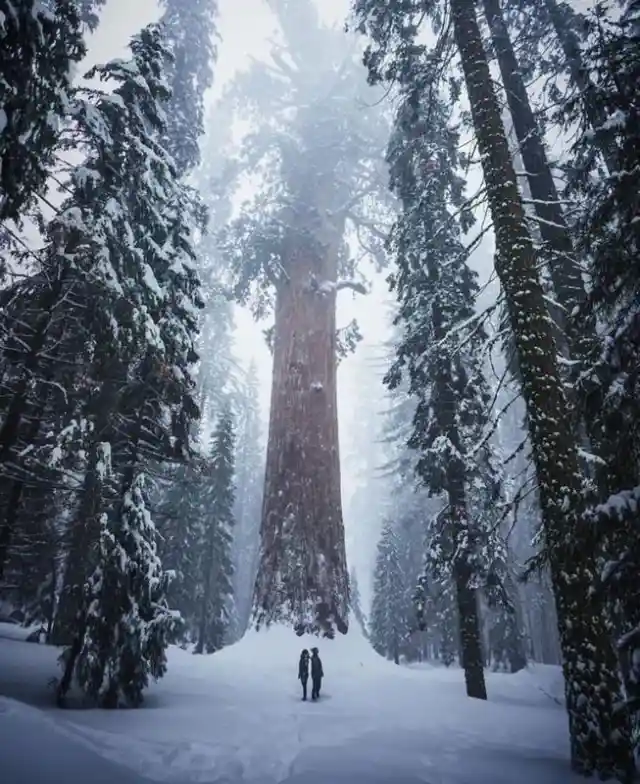
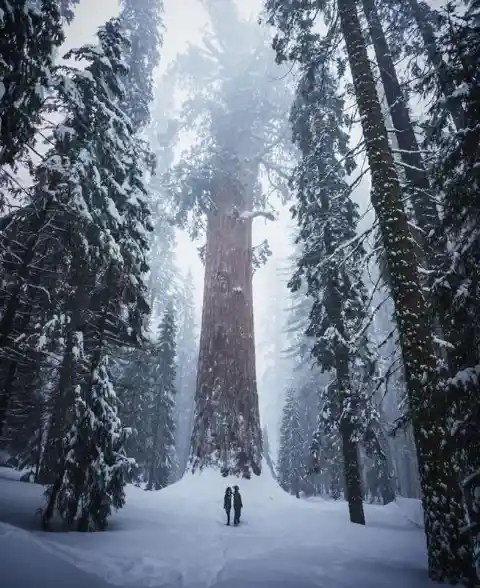
Not only that, but in terms of lifespan, Sequoias trump us. The oldest human was a little more than 120 years old. The oldest Sequoia lived to be over 3,200 years old!
Mussel-ing Through Some Dirty Water
Mussels, if you allow us a bad pun, can muscle through a lot of dirty water. That’s the gist of the comparison-picture/science experiment seen below.
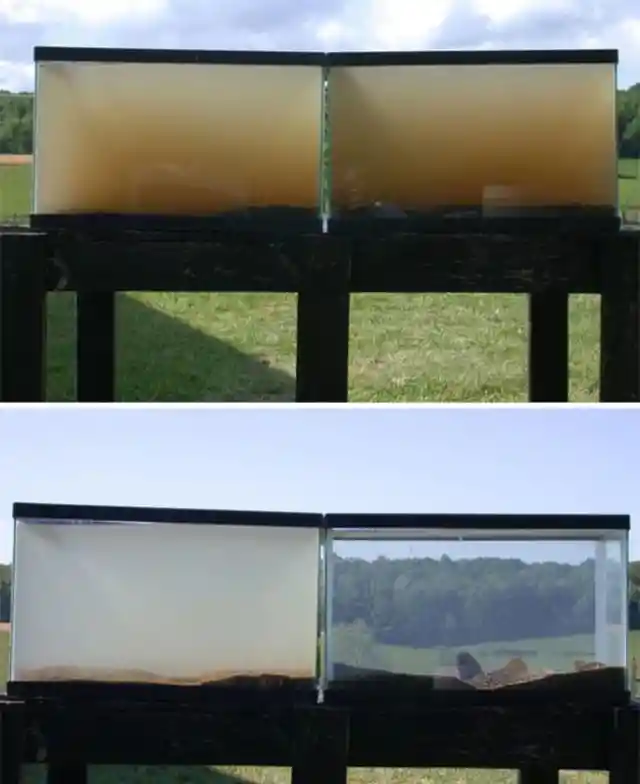
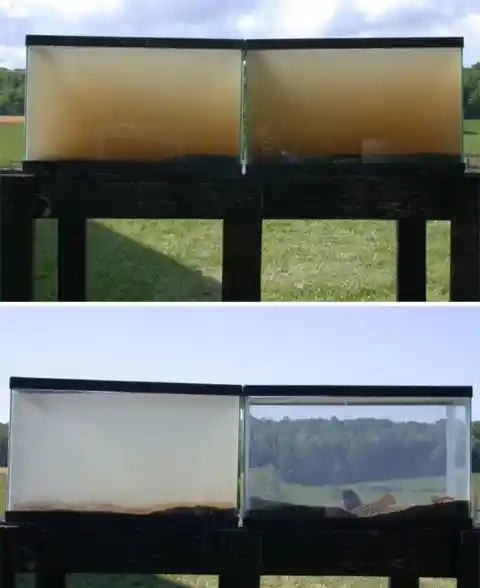
The top picture shows two aquariums filled with dirty water. One has mussels, and the other doesn’t. The bottom picture shows the same two dirty-water aquariums after a bit of time has passed. Can you guess which one had the mussels? Amazingly, a single mussel feeds on enough microbes to filter 10 gallons of water a day!
Self Portraits with Alzheimer’s
In the early part of William Utermohlen’s career, he painted Dante’s Inferno and scenes from his early memories. In 1995, however, he was diagnosed with Alzheimer’s and decided to use his artistic talent to capture what was happening.
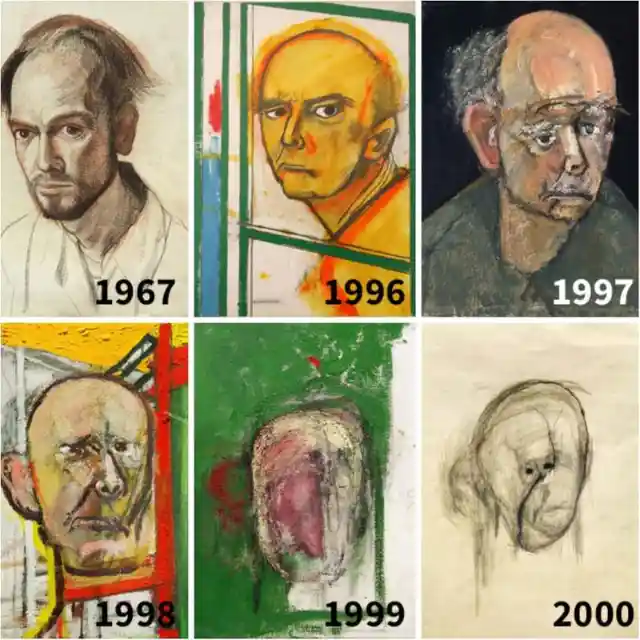
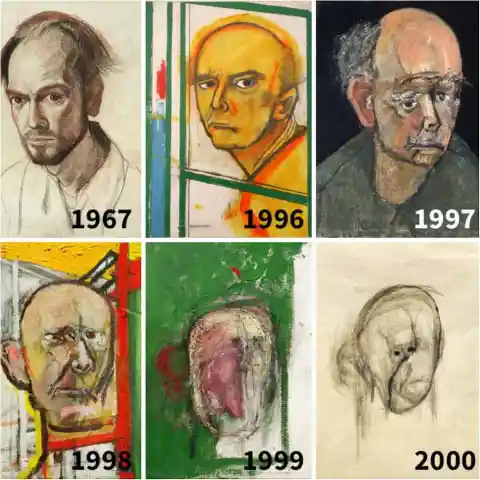
The result is a series of self-portraits. In 1996, a year after his diagnosis, he could recognize his face. By 2000, a year before his final portrait, it was all a blur. Medical students have studied these to better understand the inner experience of people with Alzheimer’s.
How Fire and Rain Balance Each Other
Russel Crowe captured something special in the following comparison photos he shared on Twitter. The first shows just how devastating fire can be for a landscape – it burns it to a crisp. The second photo, however, shows how powerful a little rainfall can be.
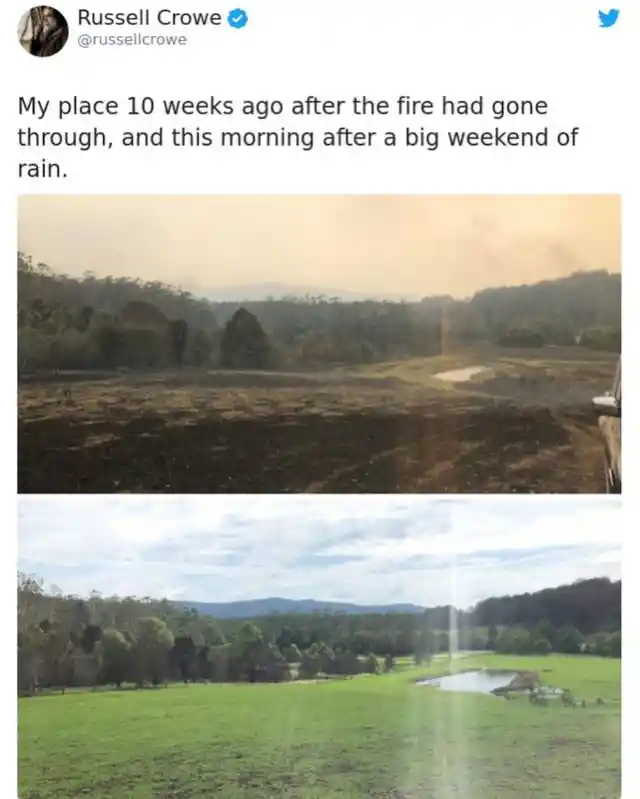
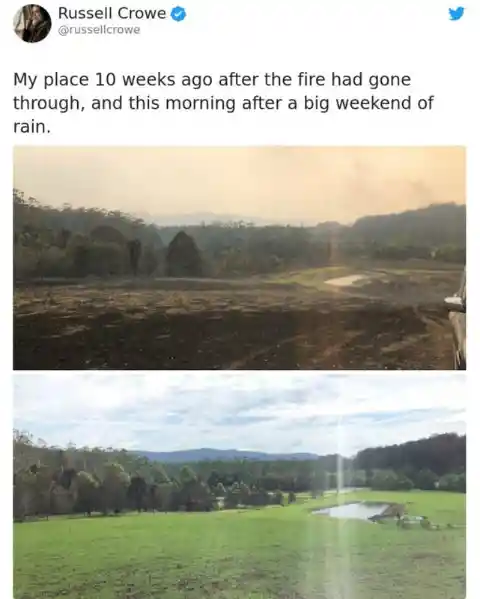
After only a few days of rain, the landscape was transformed. The blackened ground turned into green grass, and everything seems to have an extra shine to it. It seems like Nature knows how to keep everything in balance.
Selfie with a Lion
Lions, the so-called “kings of the jungle” (even though they don’t live in jungles), are terrifyingly large. How large? Well, just like the blue whale, the best way to find out is by comparing a human to a lion.
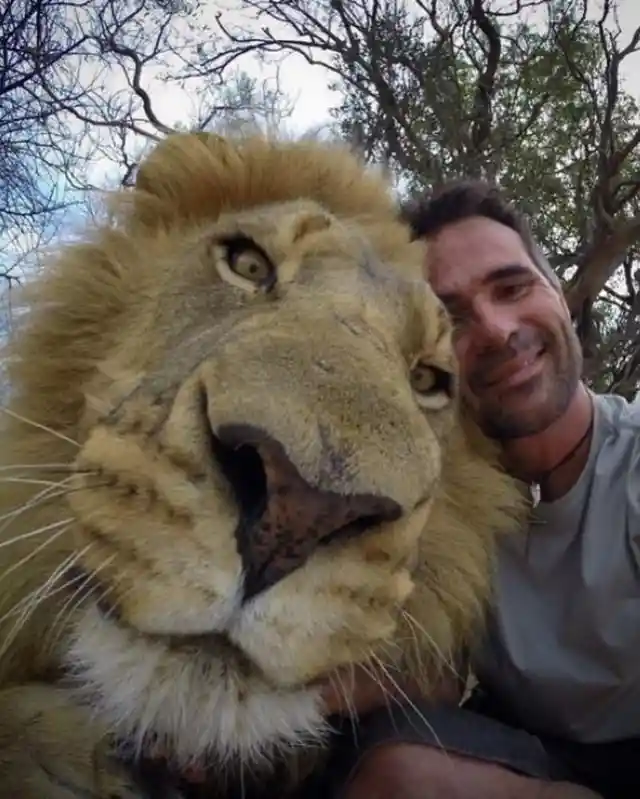
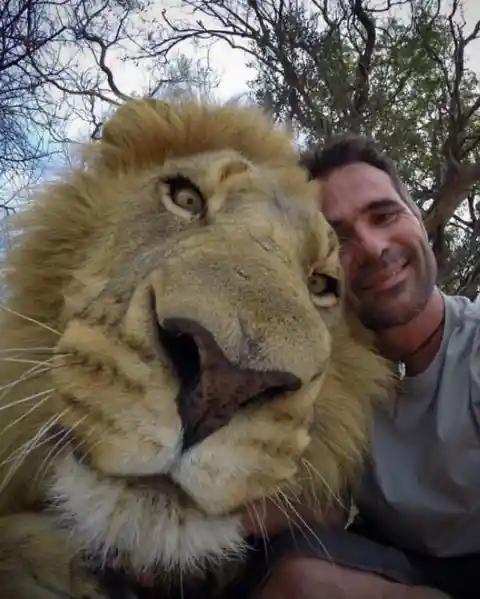
Luckily for those of us who don’t want to lose our heads, the brave man above did that comparison for us by taking a selfie with a lion. If you’ve ever wondered what a 10-foot long and 550-pound cat looks like, there’s your answer.
The Hair We Share
It turns out that human hair isn’t as unique as many of us assume. If you look at the picture below, you’ll see the long black hair of a boy on the right, and the long-haired body of a Peruvian guinea pig on the left. You’ll also see that they’re nearly identical!
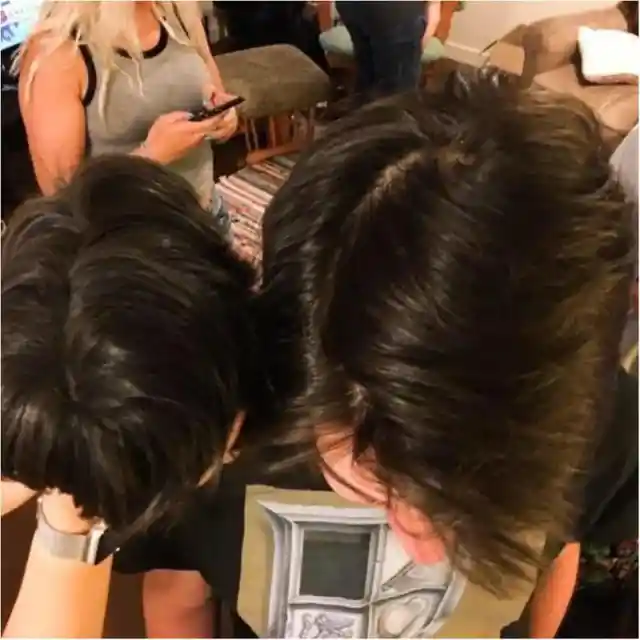
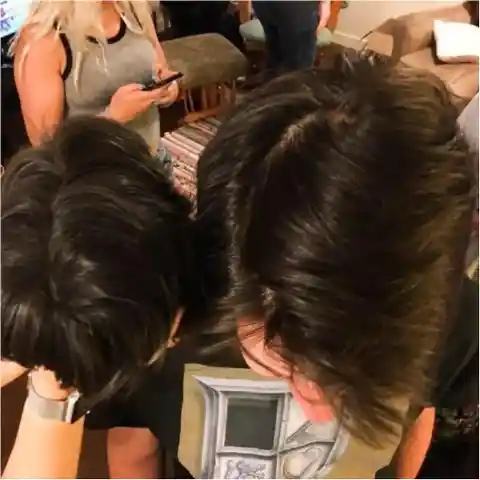
Peruvian guinea pig hair, just like human hair, also requires a bit of maintenance. Although it doesn’t need gel and conditioner, it does need a daily clean and regular trimming.
An Explosive Picture
On May 18, 1980, after two months of steady earthquakes, the north face of Mount St. Helens slid downstream. The devastation caused by this landslide – the biggest in recorded history – was captured by two separate photos taken a few months apart.
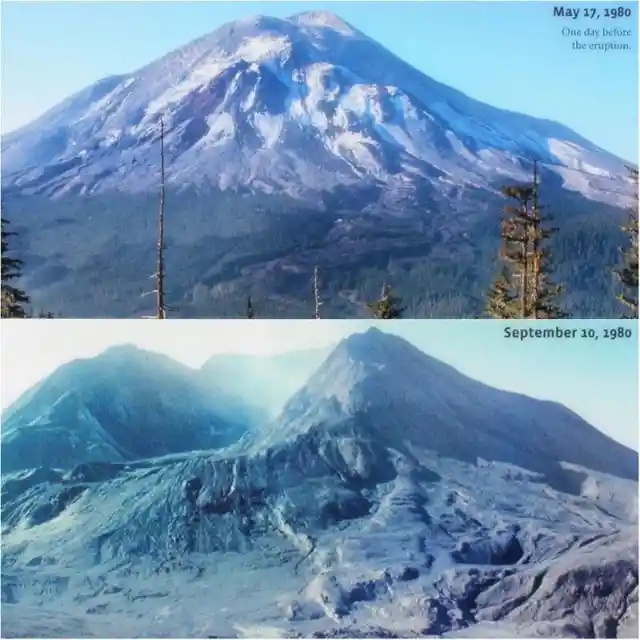
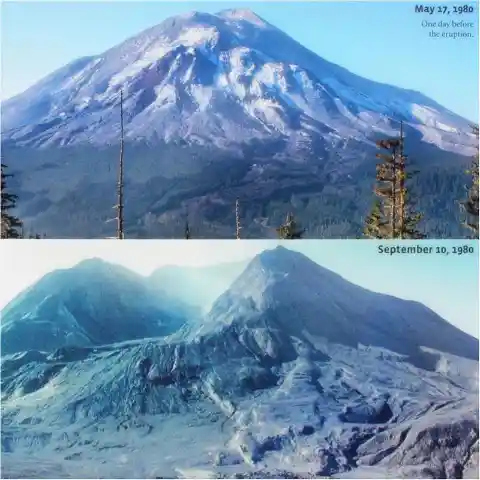
The first shows the north face intact. The second shows it after the eruption. The explosion not only damaged the mountain, but also caused the deaths of 57 people (including a prominent volcanologist), a few thousand animals, and countless nearby trees.
Private Transport Versus Public Transport
We all know that cars take up a lot of space. We also know that most cars only carry one or two people at a time. Putting these two facts together can help us understand just how inefficient our fuel-efficient cars can be.


The photograph above makes it even easier to visualize by showing how much space (and traffic-induced stress) could be saved if more people took the bus. It’s a strong visual argument for the importance of public transport.
Starfish Arms
When many of us imagine what a starfish looks like, we think of Patrick from Spongebob SquarePants – in other words, a five-sided creature. However, it turns out that starfish come in a bewildering variety of forms with an equally bewildering amount of arms.
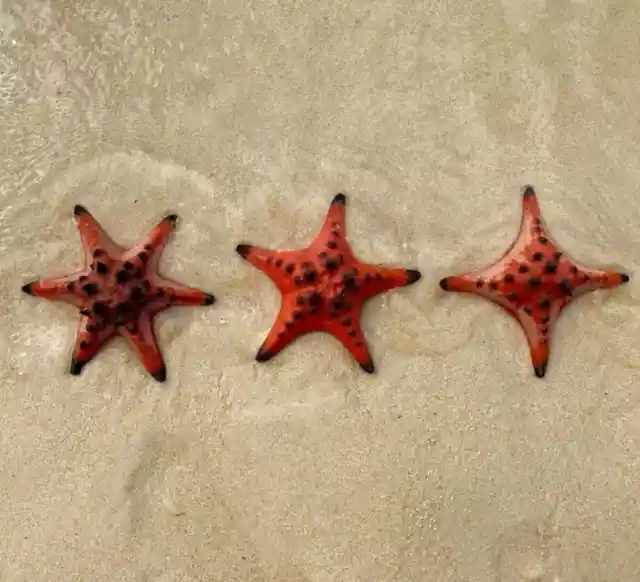
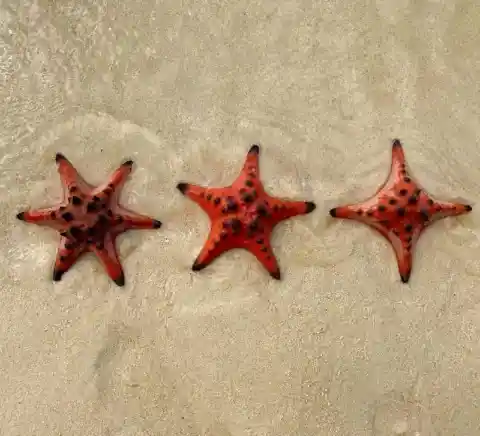
As you can see from above, the five-arm starfish that’s so popular in cartoons is only one version of this magnificent creature. Plenty of other starfish move about with four arms or six arms – some even have 24 arms!
The Rainy City
The city of Seattle, Washing is known for being the home of Starbucks, Microsoft, and the Seattle Seahawks. What it isn’t known for is a city of beautiful weather. Summers are short, the winters always drag on, and rain is always looming over the horizon.
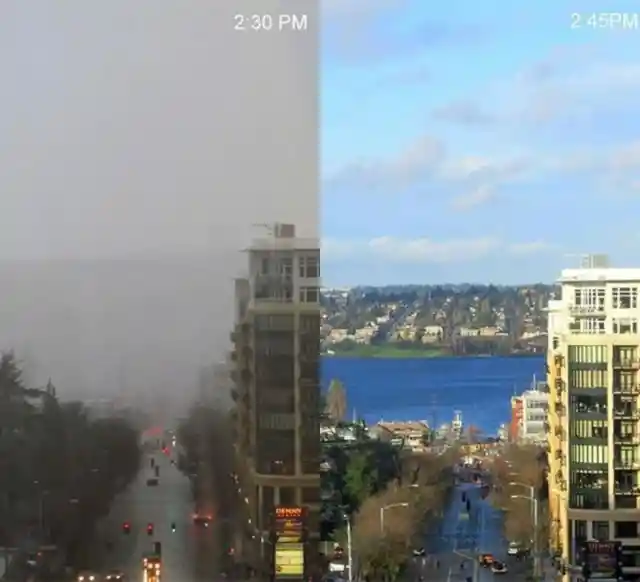

The two photos above, taken only 15 minutes apart, show how quickly and drastically weather can change in the rainy city. If you plan on visiting, pack an umbrella – or get comfortable spending time indoors.
Porvoo in Old Days and New
Porvoo city in southern Finland is known to be an idyllic (and eminently paintable) spot. Over the years, hordes of local artists and foreign artists have set up their easels to try and capture the unique beauty of this 800-year-old settlement.
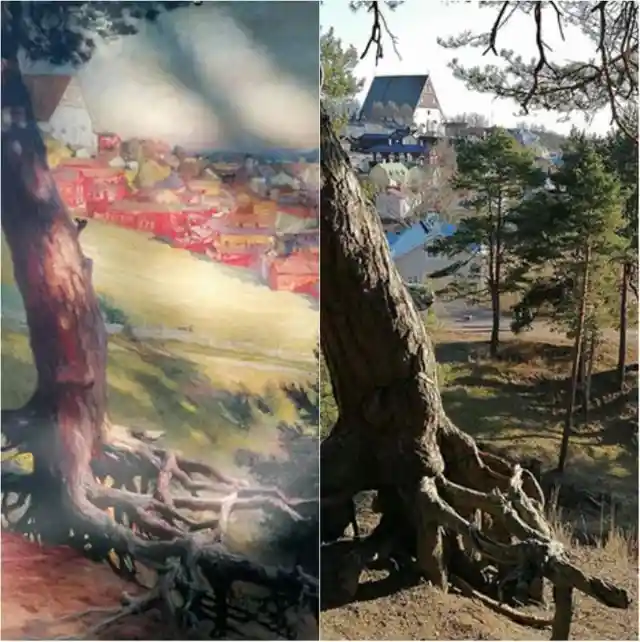
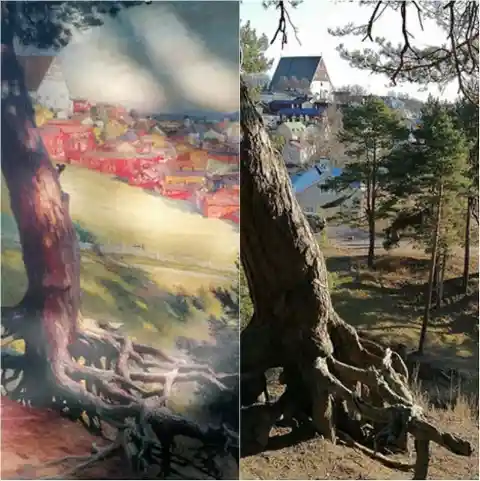
The photo above, shared on social media, is a great comparison of Porvoo as painted in the old days and Porvoo as photographed now. Despite the passage of time, we can see a lot of similarities between the two.
The Wonders of Hubble Photos
Over the years, NASA has given us some breathtaking images of the universe – especially after the 1990 launch of the Hubble Space Telescope. Soon after, the telescope began bringing home images from unfathomably far away places.
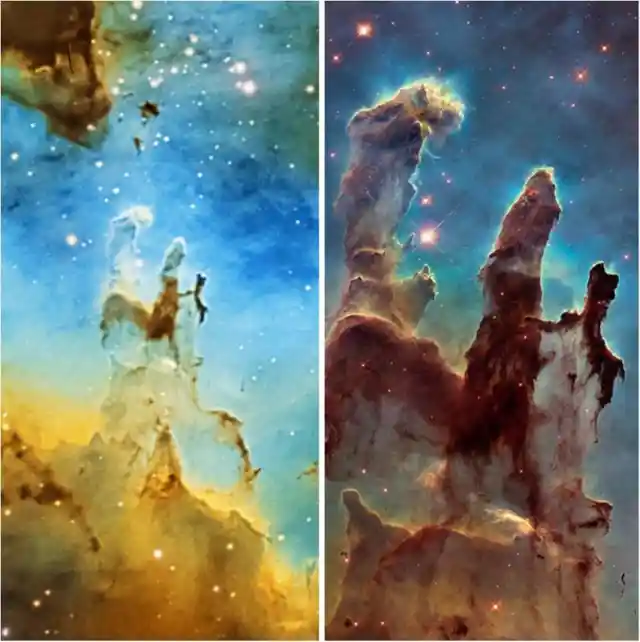
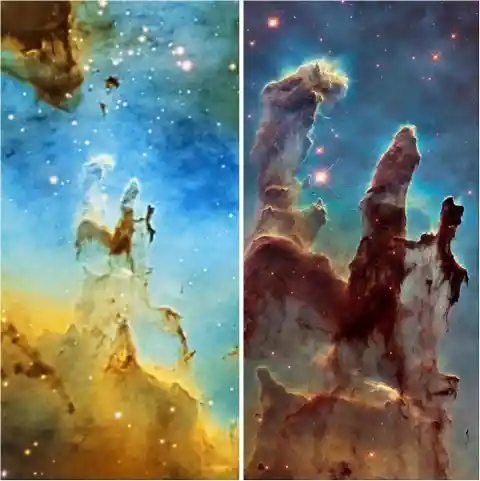
One of the most famous of those was 1995’s “Pillars of Creation.” Although the image of cosmic gas and dust can be seen from other telescopes (the image on the left), it’s immediately apparent how much better the image quality is on Hubble (the picture on the right).
Australia’s Devastating Bushfires
As if 2019 and 2020 weren’t filled with enough catastrophic events, Australia also had to deal with devastating bushfires that lasted for more than 240 days. Over that time, they wreaked havoc as they spread all over the country.
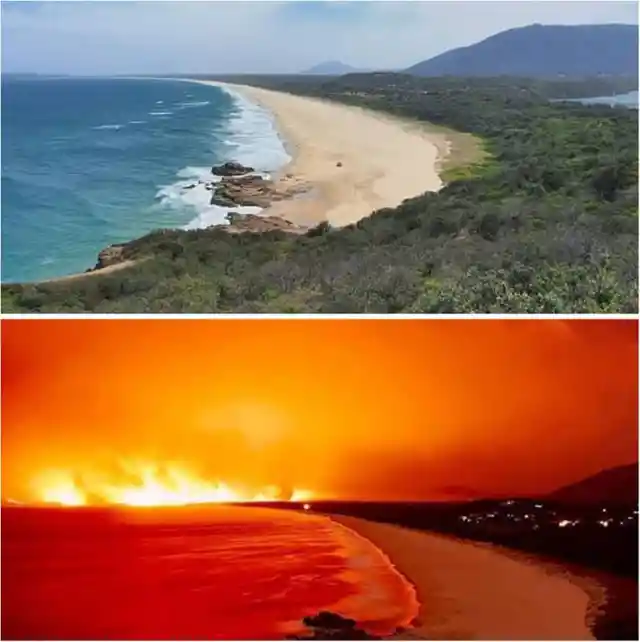
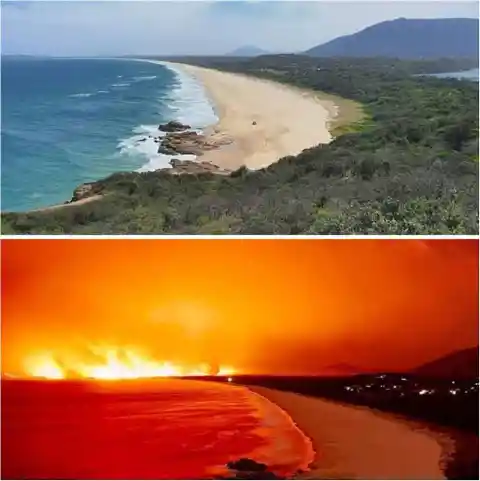
The image above captures a bit of what the bushfires did to Australia’s beautiful landscapes. On top of that, they took the lives of 28 people and well over a billion animals. Finally, in February 2020, torrential downpours and human intervention put an end to it.
Mimicking Nature
Nature has long served as a source of inspiration for human inventions. There’s a whole area of study called “biomimicry” that seeks to copy and re-work designs already found in nature.
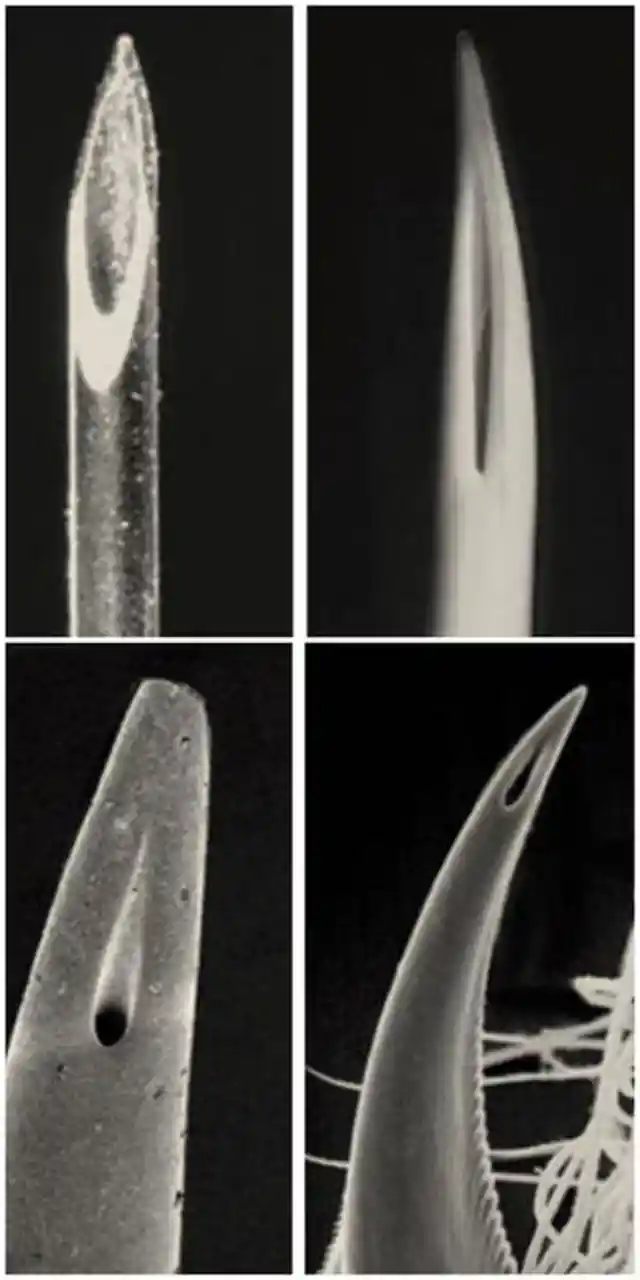
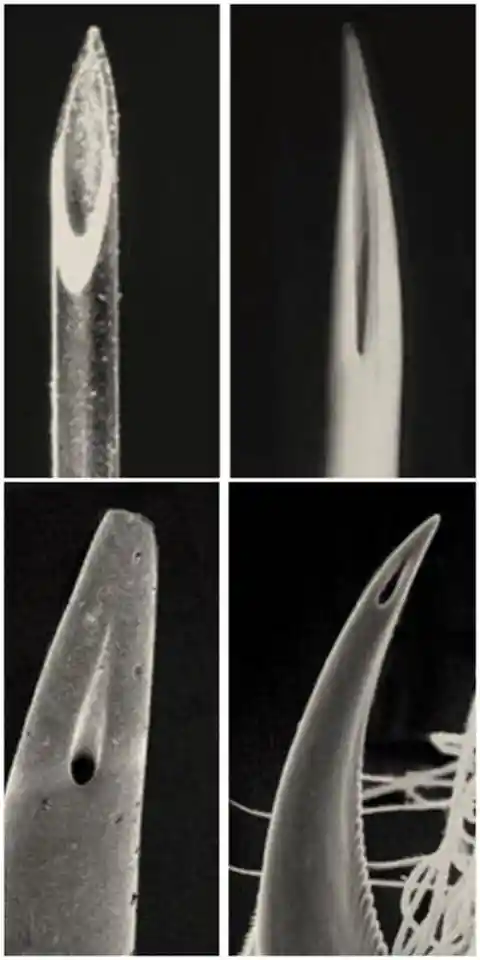
The image below shows how the hypodermic needle compares to other sharp and pointy things – a spider’s fang, a viper’s fang, and a scorpion’s stinger. See any similarities? Other inventions inspired by nature include scotch tape (after gecko feet), LED lights (after fireflies), and bullet trains (after a Kingfisher’s beak).
Counterfeiting $50 Bills
Occasionally counterfeiting US dollars evades the detection of experts, but more often than not, it ends up with an arrest. Even if you’re not making the counterfeit bills, you may be passing them along unwittingly.
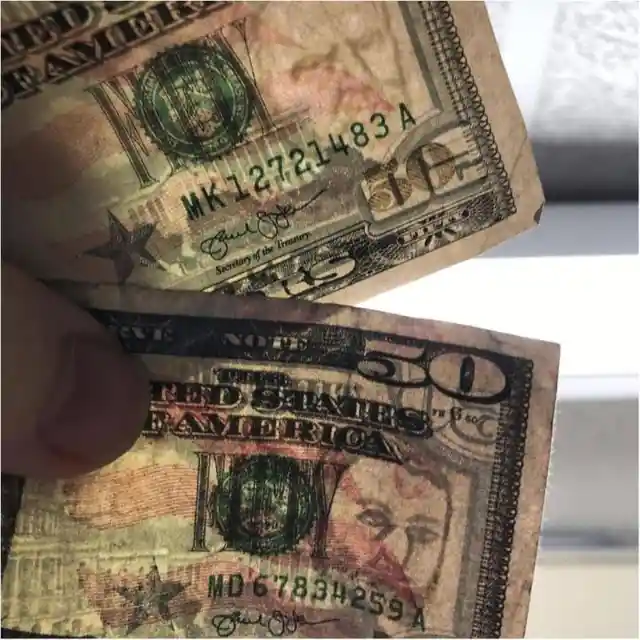
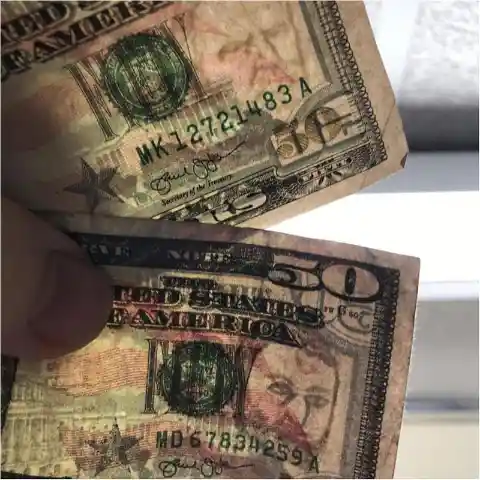
To reduce that chance, it's important to know what they look like. For example, the $50 bill should have a slightly raised “50” in the bottom right corner. In general, when comparing bills it’s important to have them be the same denomination and part of the same series.
Capturing the Night Sky
Light pollution can stop many people from being able to look up and appreciate all the stars in the nighttime sky. Many of us eventually get used to it, but the Reddit user below wanted to capture the stars for himself, so he figured out an ingenious method.

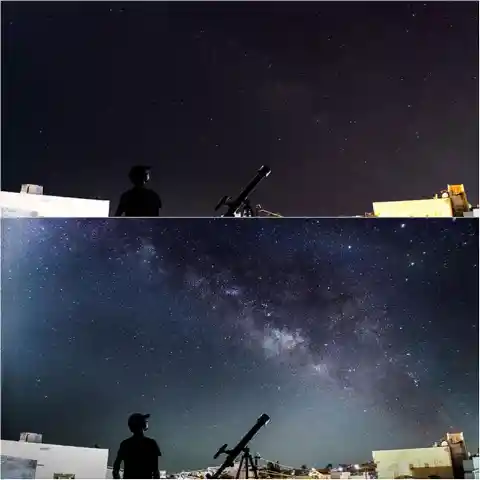
One night he went up on the roof of his house in central India and began snapping photos. The top image is one photo, the bottom one is a composite of 120+ photos!
The First and Second Day of School
The smiley boy on the left is excited about his first day at school. He’s prepared with his action-figure lunchbox, school supplies in his backpack, and an upbeat attitude. However, by day two, things have changed – a lot.
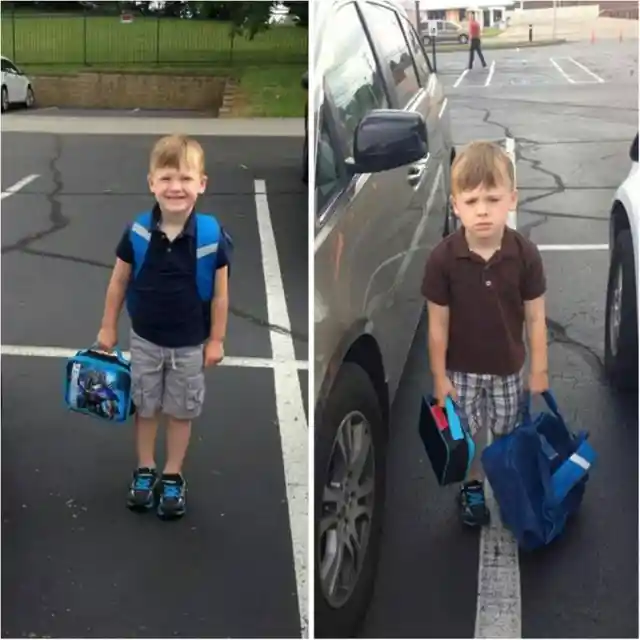

The smile is turned upside down, the backpack is getting dragged, and the cover of the lunchbox is turned away. We think it’s fair to say he’s not too excited about summer being over. Give it a few weeks though and he’ll be fine.
Stealth-Mode Scarf
Being rich and famous isn’t all that it’s cracked up to be. Sure, the money would be fantastic, but the nagging of the paparazzi would (very quickly) get old. To help celebrities solve the latter problem, an enterprising designer created the ISHU scarf.


Made from thousands of tiny crystals, this scarf reflects light back into the camera – thus making the person in the photo nearly invisible. Unsurprisingly, it has been a hit with celebrities who want to evade the paparazzi.
Old and Sharp
Cactuses are pretty hardy – which explains why they can survive in arid deserts with barely a drop to drink. These amazing plants come in over 1750 varieties that range in size from something that can sit in the palm of your hand to something that towers over you.
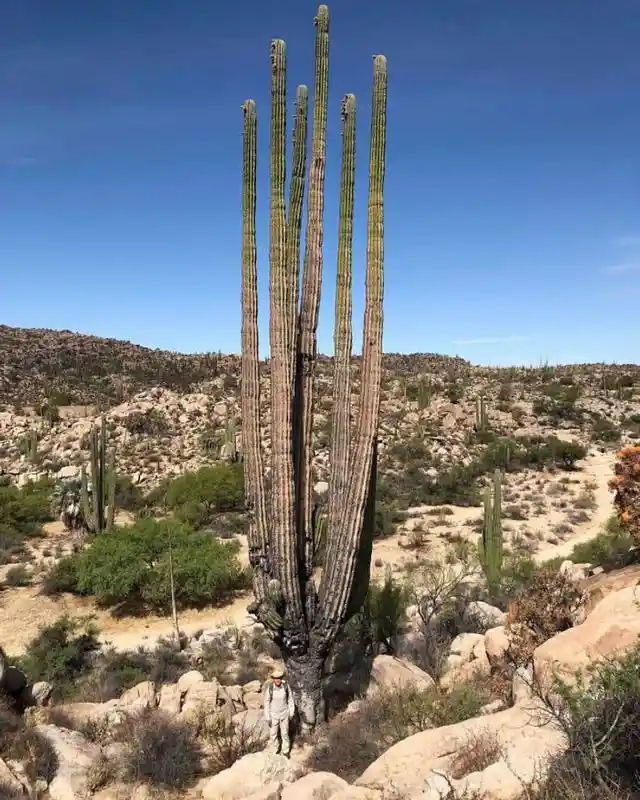
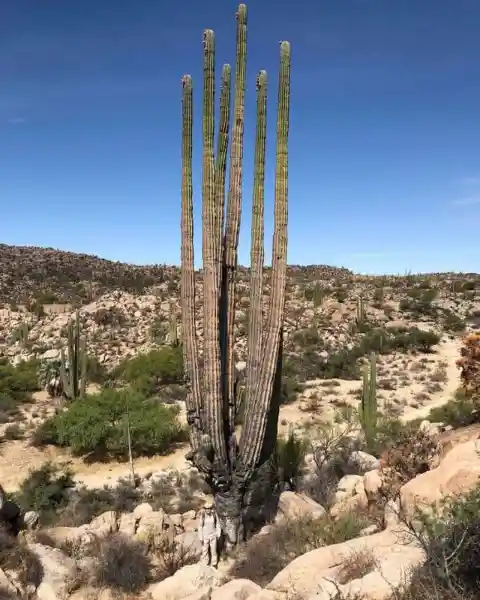
The picture above shows just how tall the Mexican Giant Cardon can get. It’s not only its 63-foot height that’s amazing, but it’s also the fact that it’s nearly 300 years old!
Inheriting Professional Interests
As we saw from the “Like Grandma, Like Granddaughter” post from above, physical characteristics (in particular, facial features) get passed down from generation to generation. However, physical features aren’t the only things that people inherit from their family – they also inherit likes.
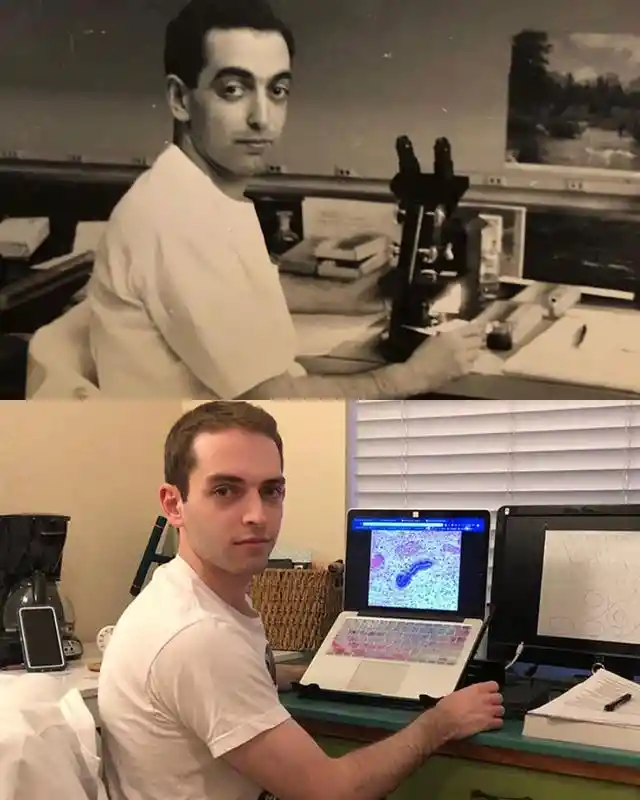
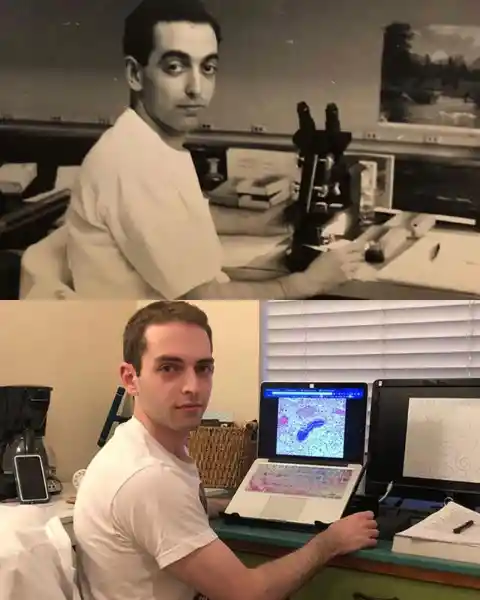
The picture above shows a man in medical school way back in the days of black and white photographs. The picture below, taken 70 years later, shows the man’s grandson doing the same thing! Isn’t that pretty remarkable?
Ragdoll Cats
The cat below is named Myrcella, and she is a Ragdoll cat. Although it’s easy to be enthralled by her strong blue eyes, it’s Myrcrella’s coat of fur that is almost magical. As you can see from the photos below, her fur changes with the seasons.
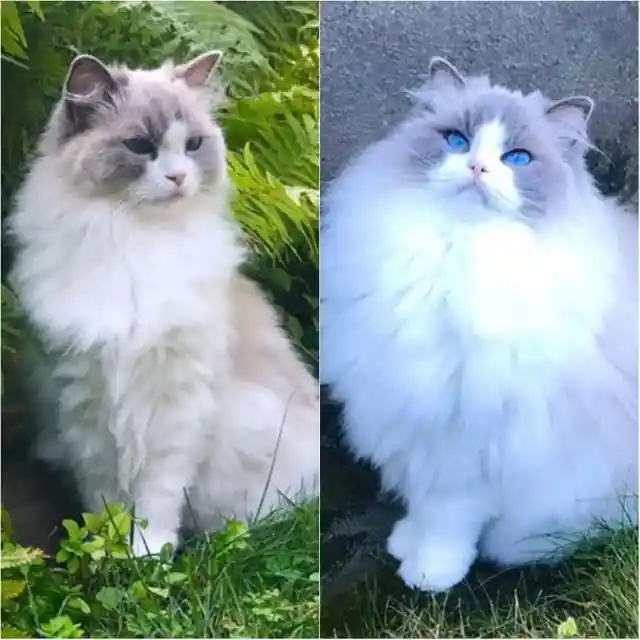
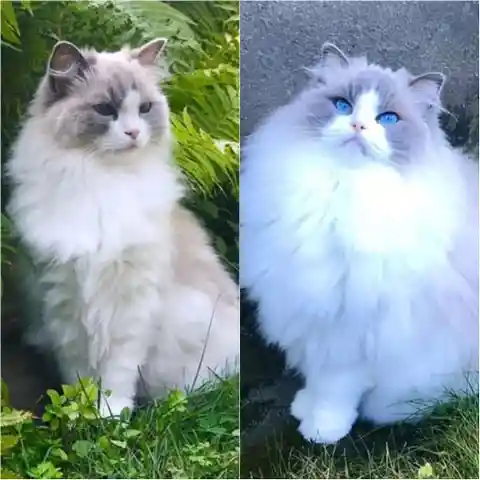
To the left is summer, and to the right is winter. The seasonal change between short and long fur requires a lot of grooming – which is pretty much any cat’s favorite activity (the other is sleeping).
Cleaning Up a Mumbai Beach
Versova Beach in Mumbai, India is pictured below. If you take a look at it, you’ll see that there’s not much room for sunbathing because plastic bags and bottles cover the sand. The environmental activist and lawyer Afroz Shah wanted to do something about it.
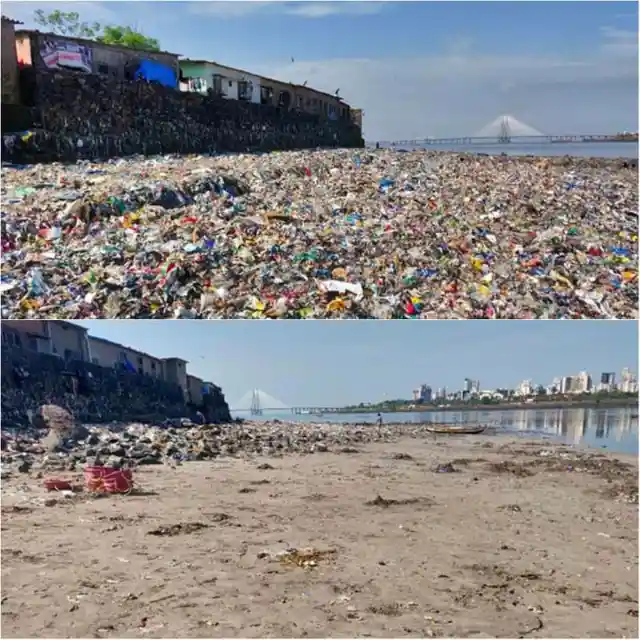
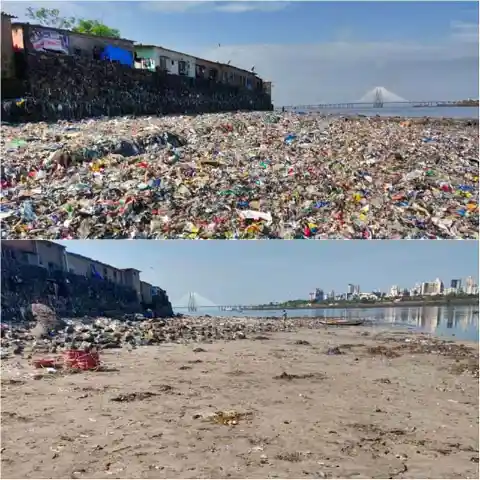
He began to clean up the beach, and soon plenty of other volunteers followed him. The bottom picture shows the results. For his efforts, Shah was awarded a Champion of the Earth award from the United Nations.
Spokey Gets Adopted
Spokey, the sad-looking dog in the picture on the left, was found in rural West Virginia and brought to a Society for the Prevention of Cruelty to Animals (SPCA) center. Although Spokey was pretty calm, she didn’t eat or drink much – which, unfortunately, is all too common for rescue dogs.
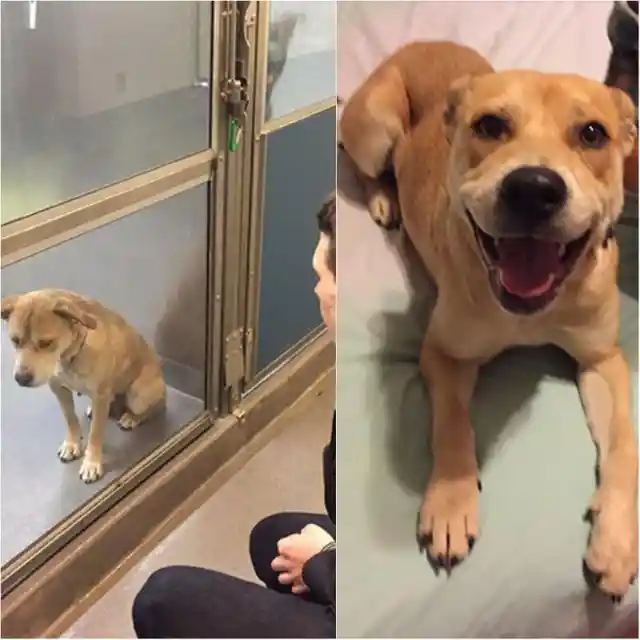
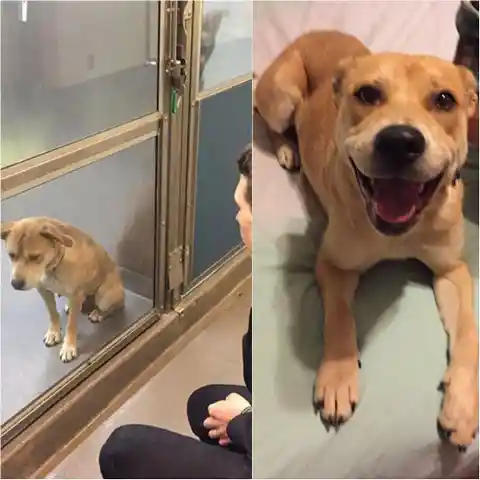
However, one day a potential adopter stopped by and immediately fell in love with Spokey. Once adopted, Spokey’s mood brightened up tremendously – as you can see from the picture on the right.
Tiger Paw Versus Human Hand
As we saw from the blue whale and lion posts above, our understanding of how big an animal is is often wrong. It isn’t until we see a photograph of humans next to other animals that we grasp it – just take a look at the tiger paw below.
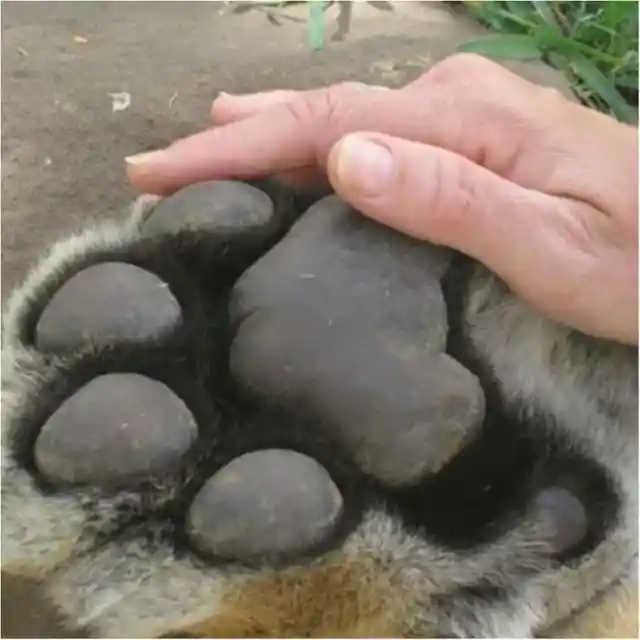
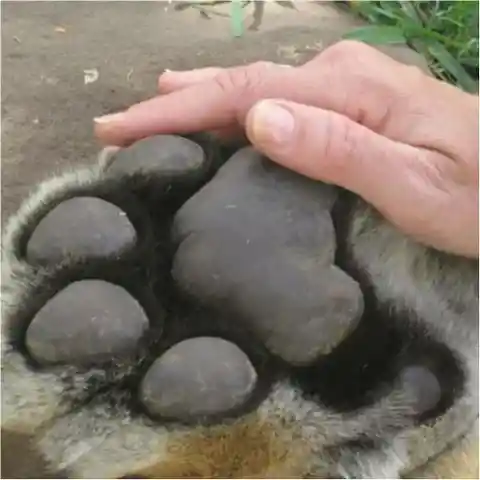
It’s pretty remarkable! Each tiger claw can grow up to five inches long, and each foot has up to five claws. This unique anatomy contributes to its powerful grip and fierce reputation.
Weight Loss Goals
Humans come in all shapes, sizes, and metabolisms. Those with fast metabolisms may eat whatever they want without gaining a pound. Those with slow metabolisms have to be extra careful about every calorie they put in their bodies.
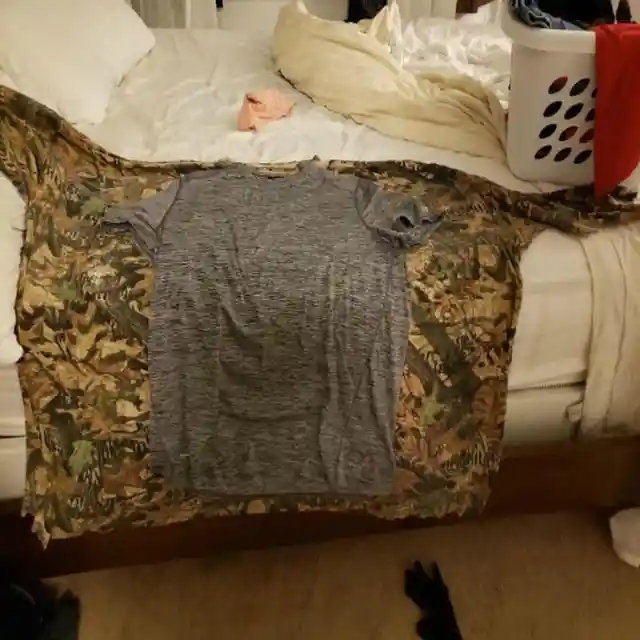
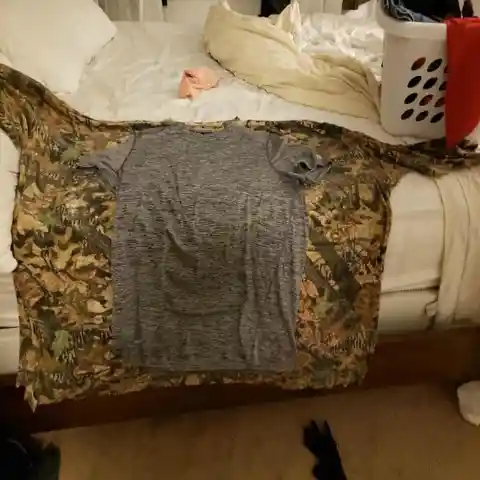
Although weight loss is a difficult process, it’s a process that is reachable for many people. For example, the two shirts in the picture above belong to the same person. The gray t-shirt on top was bought after this amazing person lost 400 pounds!
Barcelona: Day and Night
Barcelona, a city of 1.6 million in northeastern Spain, is well known for its famous buildings (Gaudi’s La Sagrada Familia), a fantastic football team, and world-class nightlife. Like many bustling cities, there’s always something new to see.
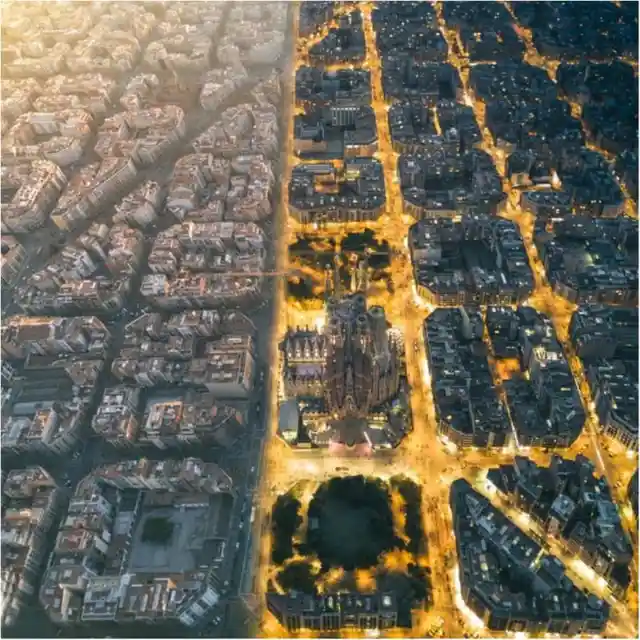
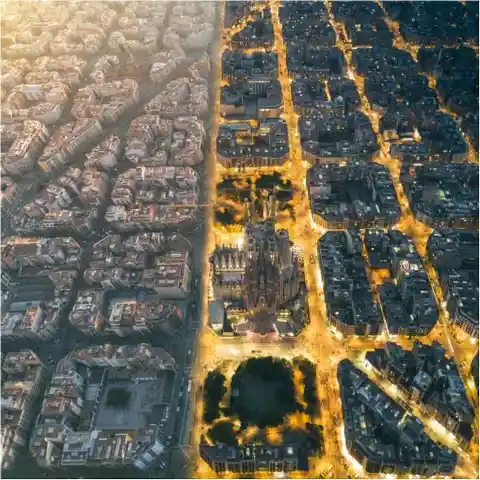
One unique take on Barcelona, however, was captured in the photo above – the left side shows Barcelona during the day, and the right side shows the city lit up at night. It’s almost as if they’re two different cities. Which do you prefer?
The World’s Smallest Computer
A grain of rice is pretty small, right? In general, yes, but when you place that grain of rice next to the world’s tiniest computer then it looks massive. Despite its small size – roughly 0.33 mm on each side compared to an 8 mm grain of rice – that little rectangular box can accurately measure temperature.
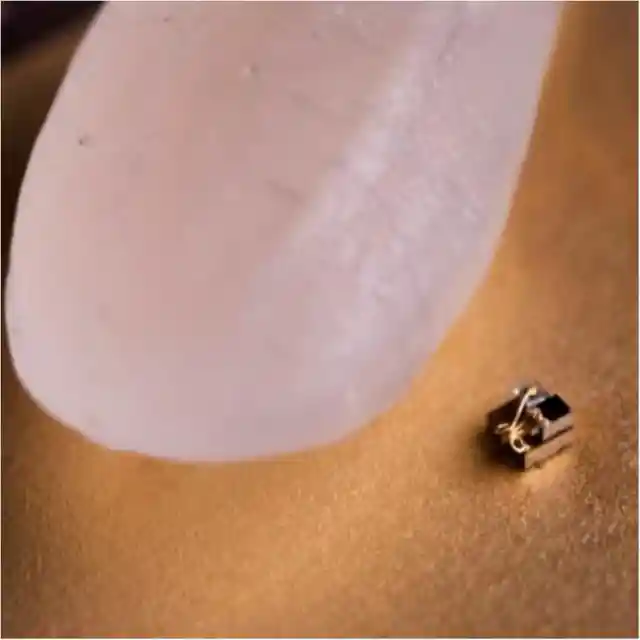
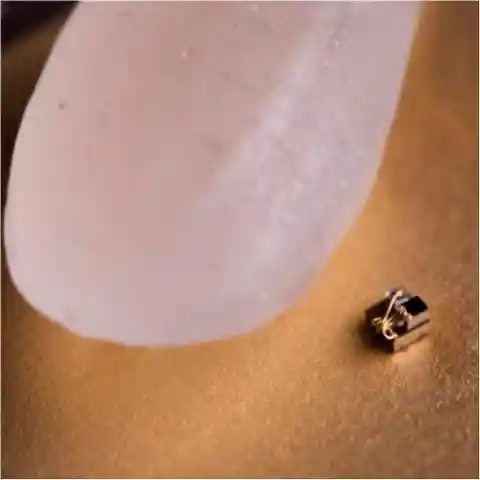
It does so by using electric pulses to convert temperature data into timed intervals. Scientists are currently using it to better understand how tumors compared with healthy tissues.
1985 Ken Versus 2018 Ken
Women – especially in the age of social media – are often expected to conform to impossible beauty standards set by models. These “models” can be actual humans or plastic dolls. Over the years, Barbie has caught a lot of flack for promoting an unrealistic body shape.
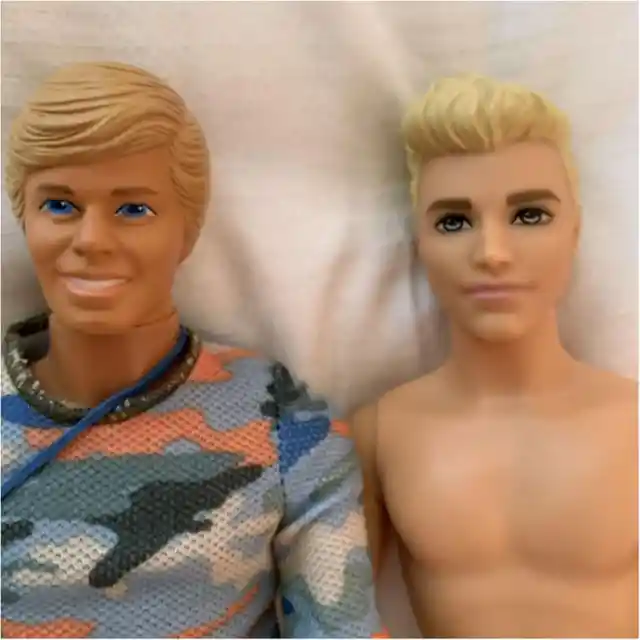
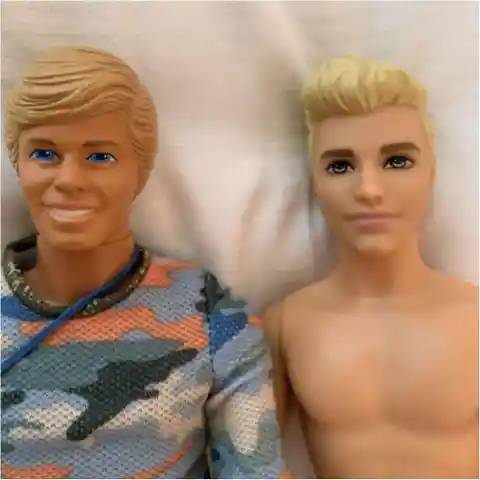
The same charge can also be applied to Ken dolls. As you can see from the comparison above, the 1985 Ken doll on the left has a physique that’s a bit more attainable than the 2018 Ken on the right.
Great-Grandma and Great-Grandson
There’s something special about seeing photos of great-grandparents and great-grandchildren. Alongside being cute and heart-warming, they’re also mysterious – the two people couldn’t be further away in age, yet they often have a natural affinity for each other.

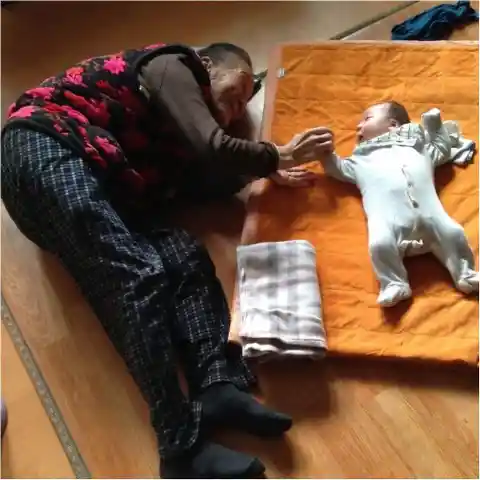
The photo above comes from Reddit user Thermochopps. On the left is his grandmother, who led a physically demanding life on a farm in rural Korea that caused permanent back problems. On the right is his new son, who hasn’t mastered walking yet.
The (Sweet) World of Honey
Honey, to most people, is an amber-looking liquid. Although that’s a popular kind of honey, it’s far from the only kind. In fact, the US by itself produces over 300 varieties!


The kind of honey you get depends on the season as well. The picture above shows jars from three different harvests – one in spring, one in summer, and one in fall. If kept sealed, this honey could last a few thousand years. If opened, it’ll probably last a few days.
Housing a Blue Whale Skeleton
The blue whale is the largest animal on earth – and perhaps the largest that has ever lived! To study it more, the Natural History Museum in London managed to get an 82-foot long skeleton of a blue whale. How?
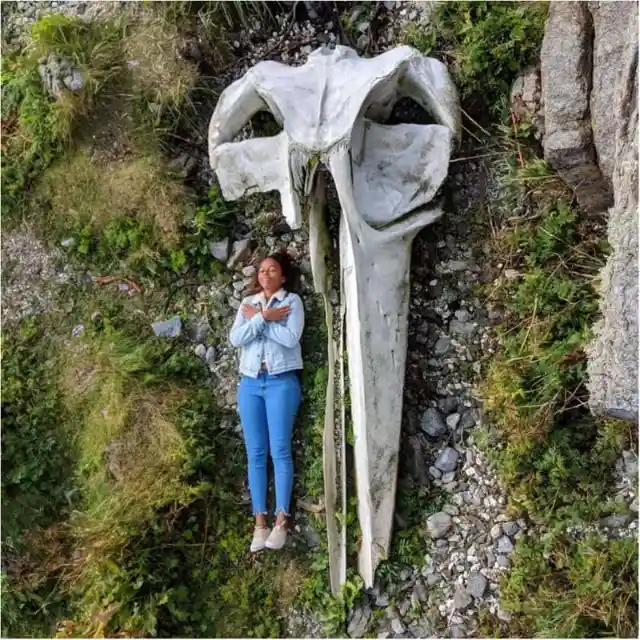
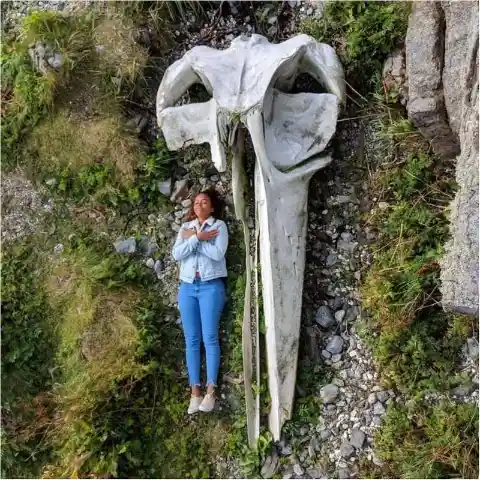
Well, they removed the museum’s front doors for starters. With a skull that weighs 10,000 pounds, it’s no wonder they had to do that. Luckily everything worked out, the doors went back on, and now visitors can appreciate the size of this majestic creature.
The Largest Flying Reptile
Continuing on with our exploration of massive animals, check out the “bird” below. The Quetzalcoatlus northropi as it’s called was a flying reptile that cruised through the skies near modern-day Texas nearly 70 million years ago.
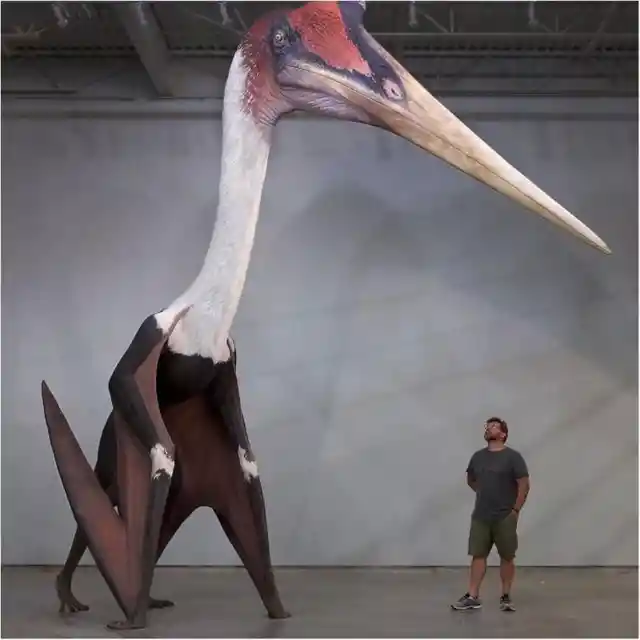
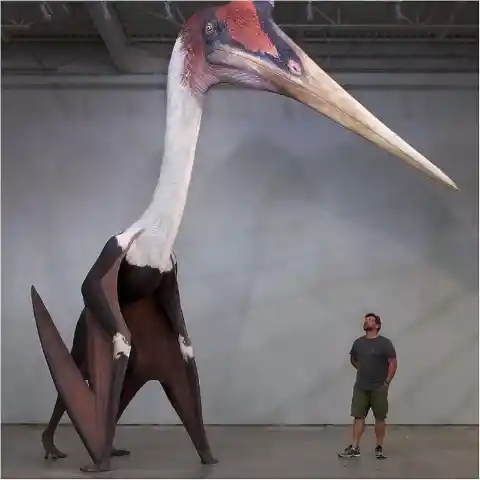
Luckily they went extinct a long time ago. As you can see from above, they were much larger than humans – their wingspan measured up to 36 feet, and they could weigh up to 550 pounds! Imagine looking up to see that flying through the air!
Lighting Makes All the Difference
As anyone who has ever spent time in a windowless apartment knows, natural light is a big deal. Landscape artists have known this for a long time, which is why they chose to paint the same natural scenes at different times of the day and year.
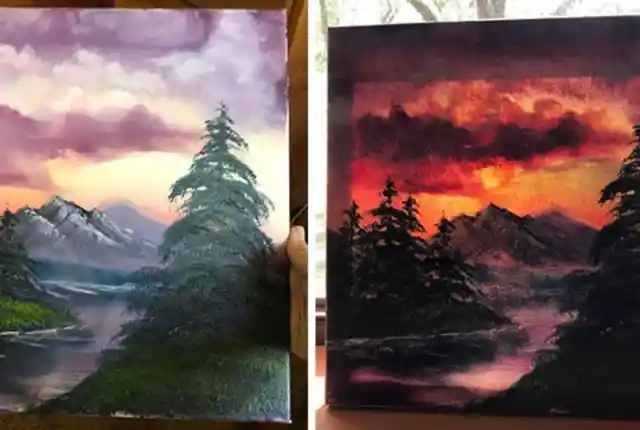
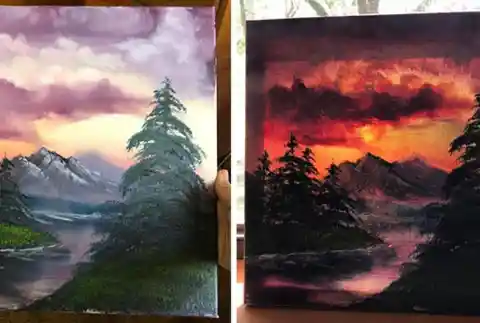
Just take a look at how the picture on the left compares to the picture on the right. It has a polar opposite feel even though they depict the same natural setting. In short, lighting matters.
Corn’s Parents
Around 9,000 years ago, people took the wild plant “teosinte” and made the domesticated plant “corn” from it. Despite corn being domesticated from teosinte, the two plants look very different.
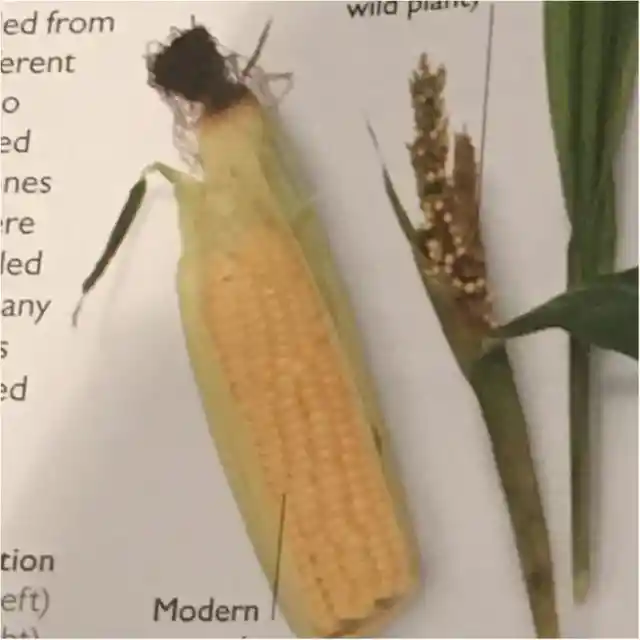
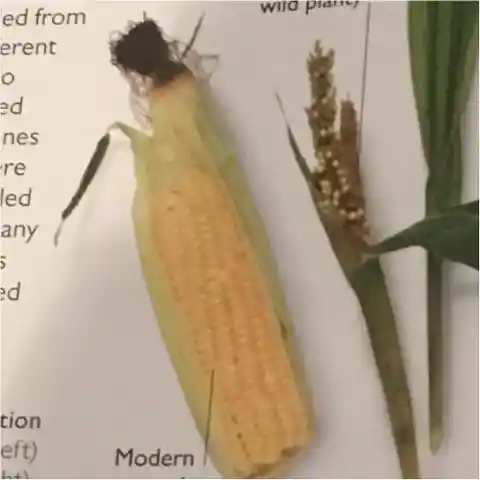
Corn was far more nutritious for humans, so it spread, slowly but surely, over the continent and across the oceans. By 3,200 years ago it was a well-established part of people’s diet in the southwestern US. Around a thousand years after that, it reached the east. Now, it’s everywhere.